[Personal Software Services, ZX81]
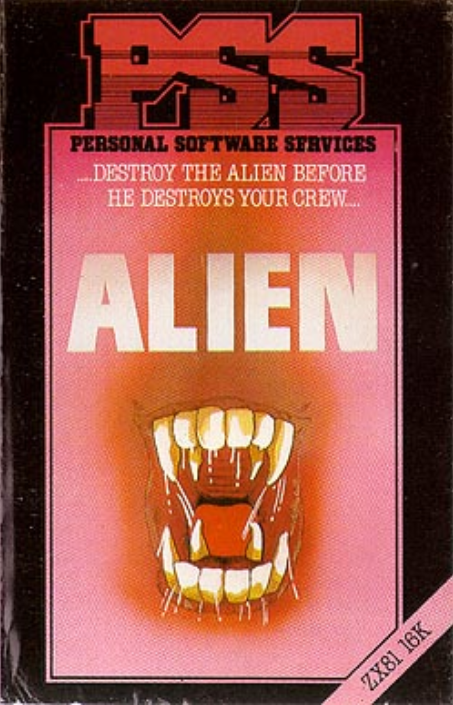
– Warrant Officer Narwhal, what’s your plan to get rid of the Alien?
– I propose we send crewmen one after the other to the rear of the ship until one of us somehow kills that thing.
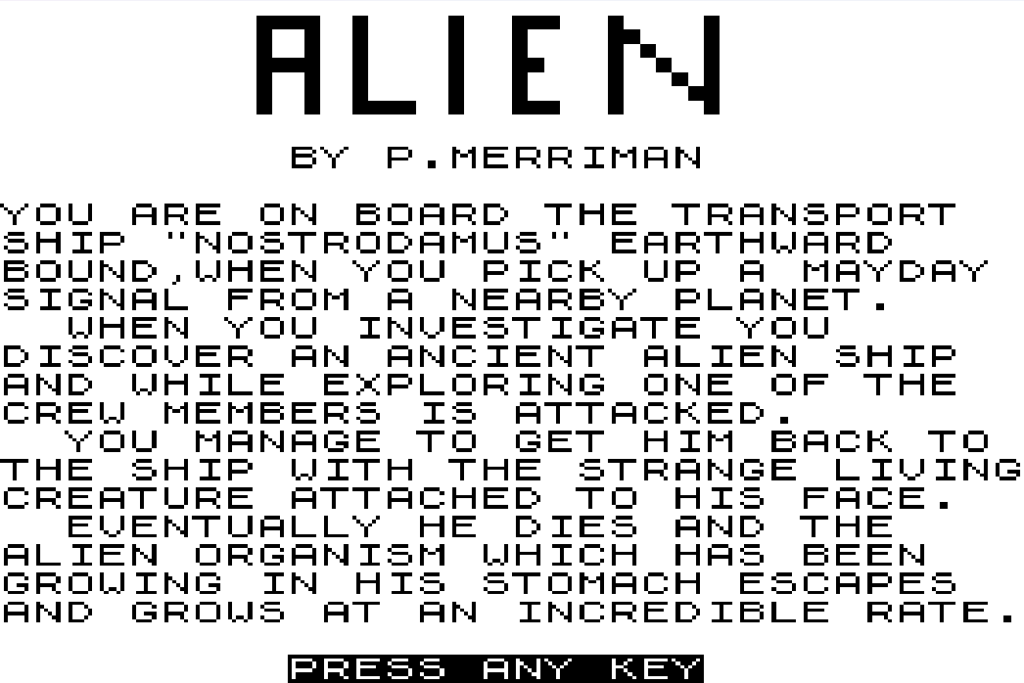
Personal Software Services (PSS)’s Alien has been on my radar for a while, but unlike Avalon Hill’s The Alien I found it too inconsequential to spend time on it. However, as I have just introduced PSS in my previous article, I thought it would be a good opportunity to tackle a game irritatingly tagged Strategy / Tactics by Mobygames and to showcase what kind of products early PSS shipped.
Alien starts with the player, represented by a black square, waiting on the left side of a force field separating the ship’s bridge from the cargo hold. The alien is in the cargo hold, but so are the weapons, so someone will have to cross the force field, grab a weapon and then hope it works against the alien.
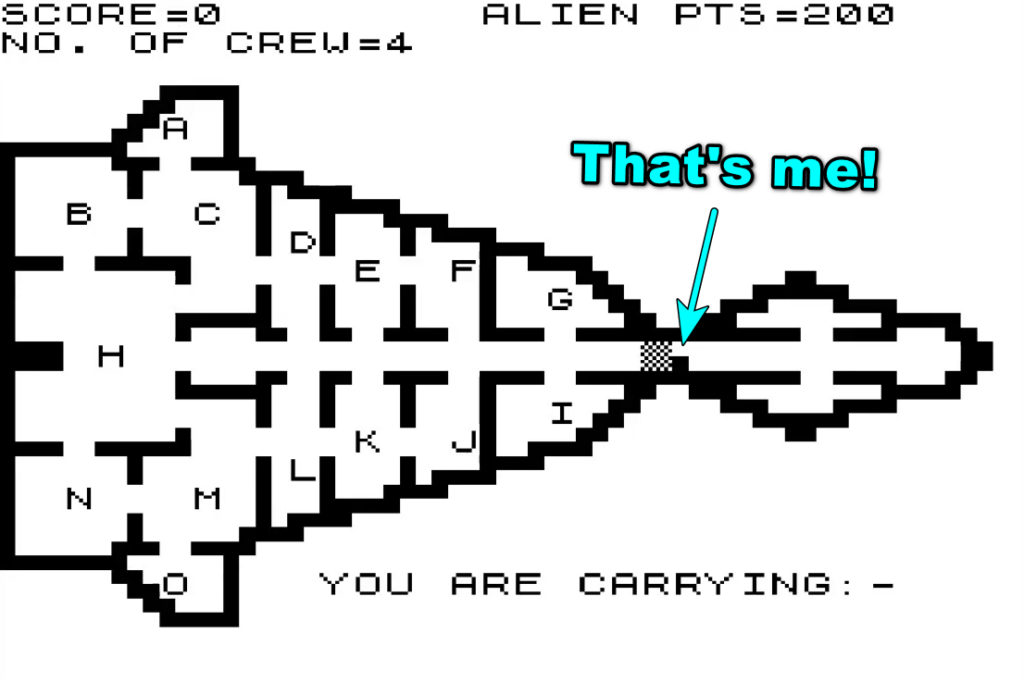
The weapons are indicated by the various letters, but what each letter represents is randomized. I grab “I”, which turns out to be a “sonic gun”, and almost immediately encounter the alien in the central corridor. I shoot it at point-blank range (our two dots are in contact), causing some damage: 40 HP out of the 200 HP the alien starts with. Once a character uses a weapon, they automatically drop it in front of them, so in my case behind the alien. Unarmed in front of an angry alien is not a pleasant situation, and I am immediately caught and killed:
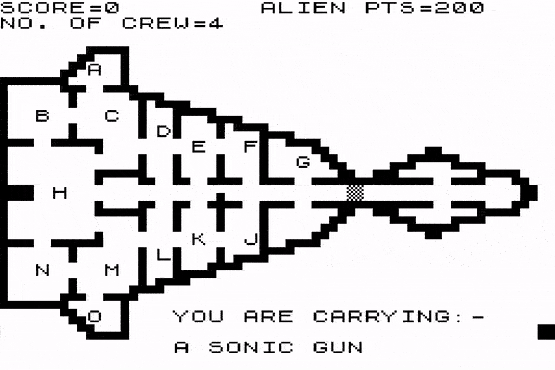
This simple combat took me several load states. Alien has been coded in BASIC by an amateur developer on a ZX81, so something as simple as shooting has its own learning curve. To shoot, the player needs to wait for the alien to be at range (only 2 “spaces”), then hold the F button until the character stops blinking, and then hold the direction they wish to shoot toward before the character resumes blinking. Of course, the interval of a blink is between 1 and 2 seconds, so by the time the player realizes they stopped blinking they may have missed their chance and the shoot input becomes a move input toward the alien.
In any case, after the death of a character, the ship is reset (the alien puts all the weapons back where they started – but does not reshuffle them) and another crewman (or crewwoman) enters the hold. This time, I grab weapon G (“explosives”) and then swap them with weapon J (“laser pistol”); all weapons are used in the same way so really it’s just a name. I encounter the alien in the main corridor again, shoot at it and deal it major damage (60 HP).
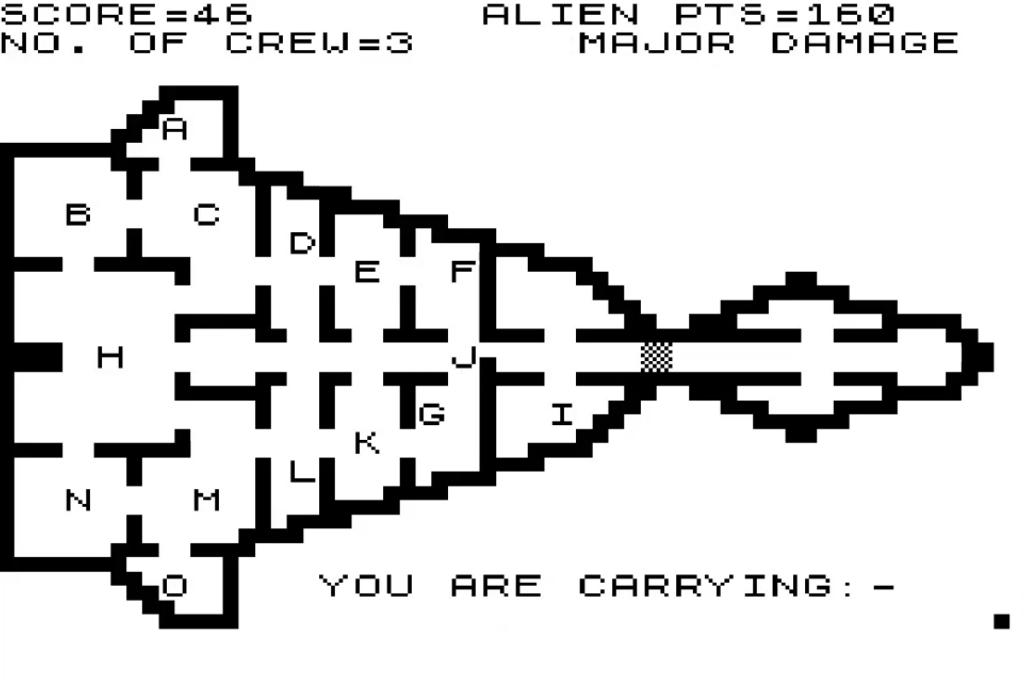
Even better, as I shot at maximum range (2 tiles), the weapon was dropped between me and the alien. The alien can’t go through the weapon, and during the time it takes it to navigate around the discarded laser pistol diagonally I grab the sonic gun and deal some extra damage:
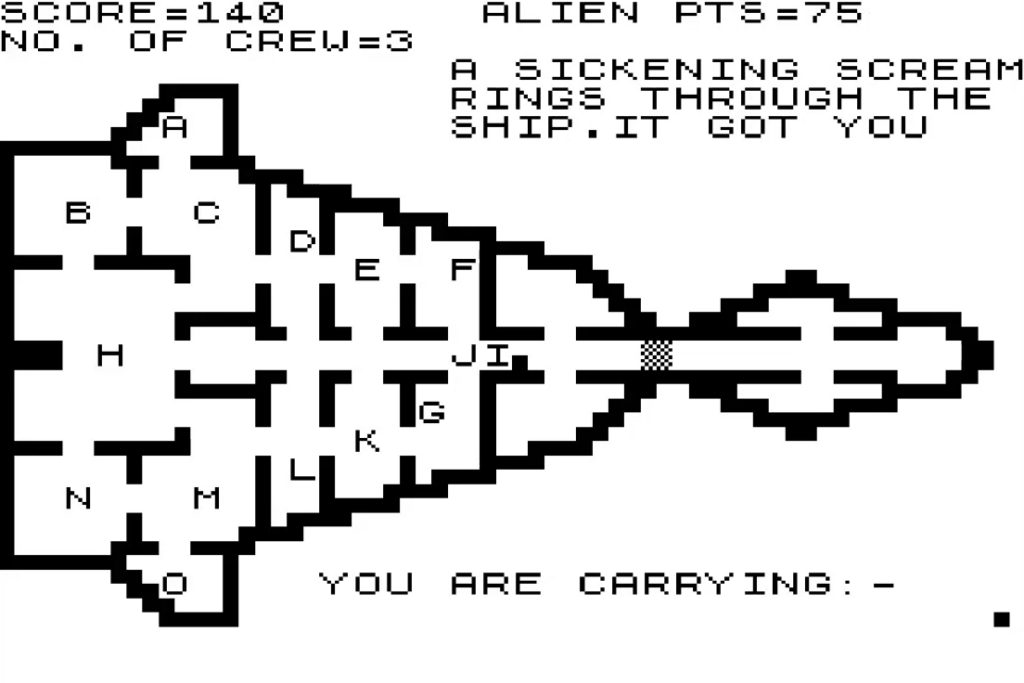
Having found a good weapon against the alien, I reckon I could guarantee a kill by only using the laser pistol, but where would be the fun in that? I’d rather use explosives. Unfortunately, they only do 18 damage – but at least they stun the alien:
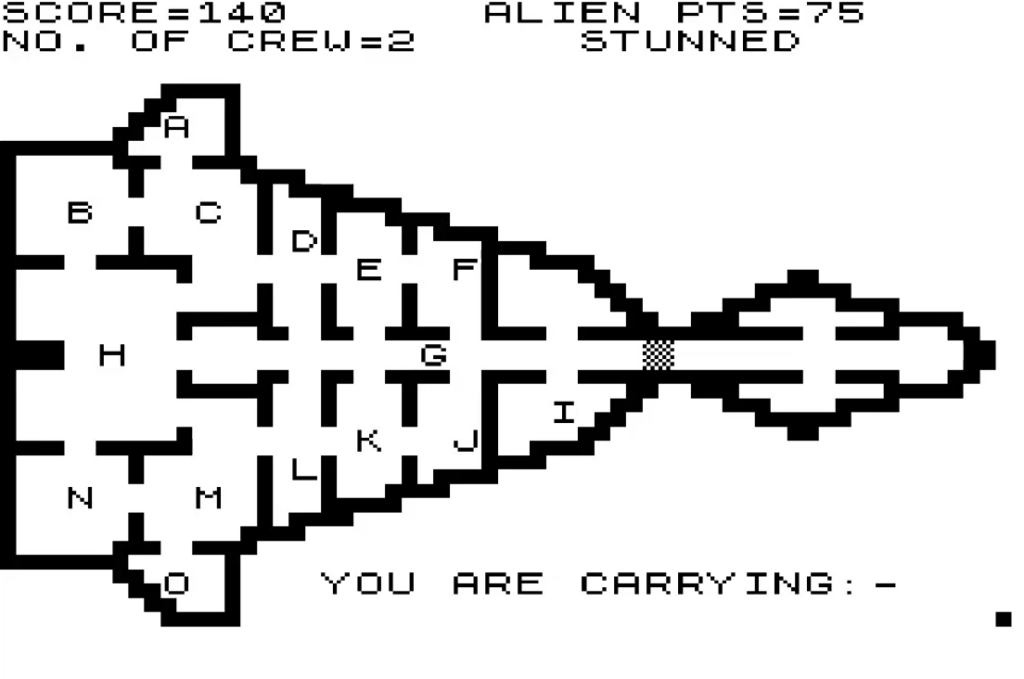
I don’t make any use of that extra time as the next weapon I test (“F”, a force generator) is totally ineffective. At least it does not multiply the alien, as it could have in Space Station Zulu.
With the last member of the crew, I play it safely and just shoot the damn thing with the laser pistol:
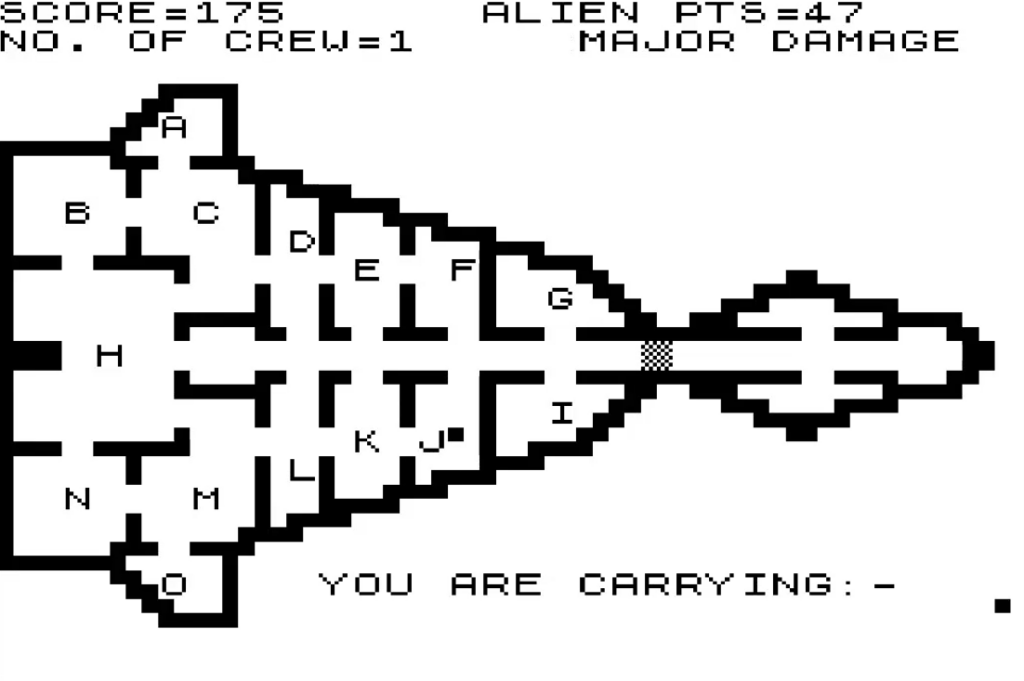
This immediately ends the game. The whole thing took 15 agonizing minutes, including a few reloads when my shot would not go off.
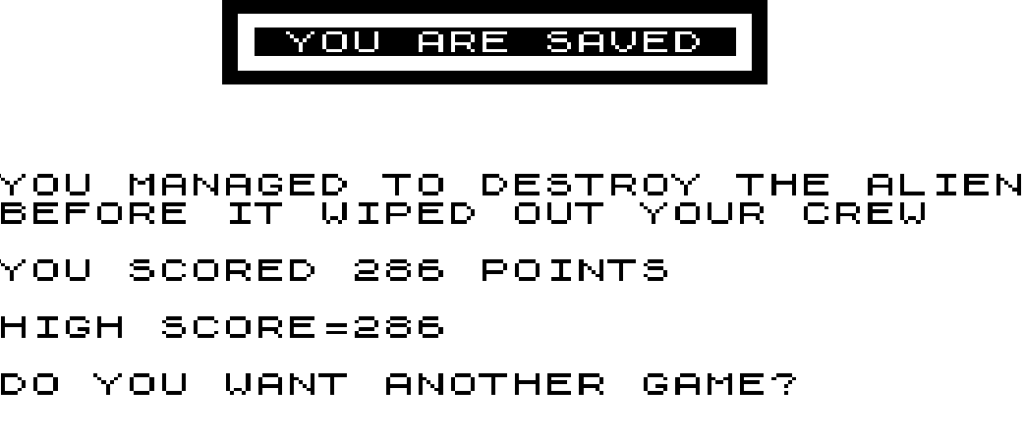
I have little to say about Alien, whose author (P. Merriman) is not credited on anything else. As I said, Alien is one of PSS’s early games from their mail-order era. There is little left of that period, with ZX81Stuff listing almost 30 ZX81 software MIA out of around 40. Yet, if what survives of PSS’ ZX81 game catalogue is any indication, not much was lost – most of the surviving games are rip-offs of existing games:
- Ghost Hunt (a clone of Pac-Man),
- Hopper (a clone of Frogger),
- Krazy Kong (a clone of Donkey Kong),
- The Gauntlet (a clone of Super Cobra),
- Maze Death Race, which I am pretty sure is the clone of something,
Clones are frowned upon nowadays, as they are usually shoddy products living off the ideas and talent of the original developers, but 1982 was a different era. If you were British in the early 80s, this type of clone was the only way to experience the cool arcade games (or an ersatz thereof) at home. They were also a guarantee, maybe not of quality, but at least of proven gameplay, and it’s not like Nintendo was going to port Donkey Kong on ZX81 anyway. Customers may or may not have known these games were clones, but if they knew they must have been thrilled rather than disappointed!
Still, early PSS did not only publish clones, and Alien is proof of that. It is difficult to ascribe it to a genre: it has too few options to be a tactical game, but it is hard to call a game so slow and unresponsive an action game either. There is not much of a game in the first place, and PSS itself probably did not think much of the game either, given they only ever sold it as part of a “Space Pack” bundle.
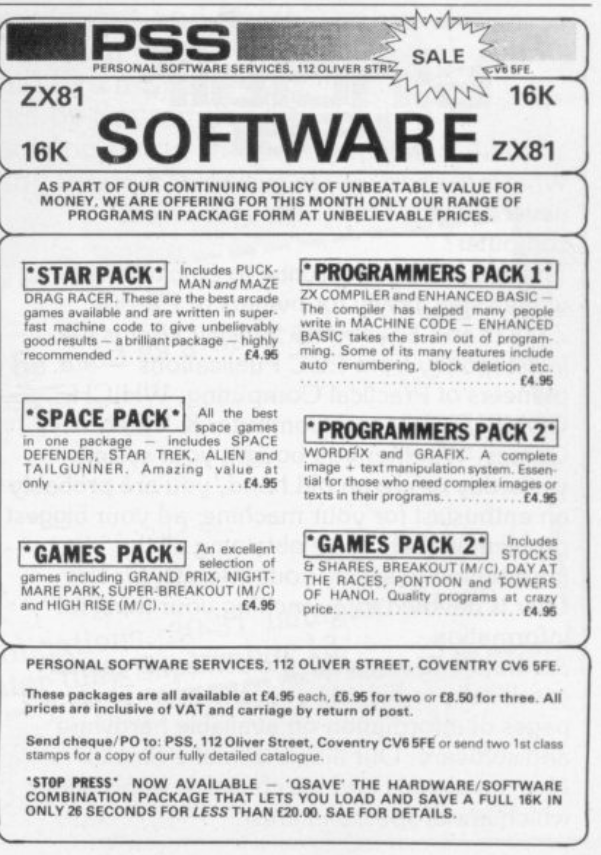
That’s all for today, but stay tuned – for the next article we’ll remain in Britain some more with a new contender for the title of worst game on this blog.